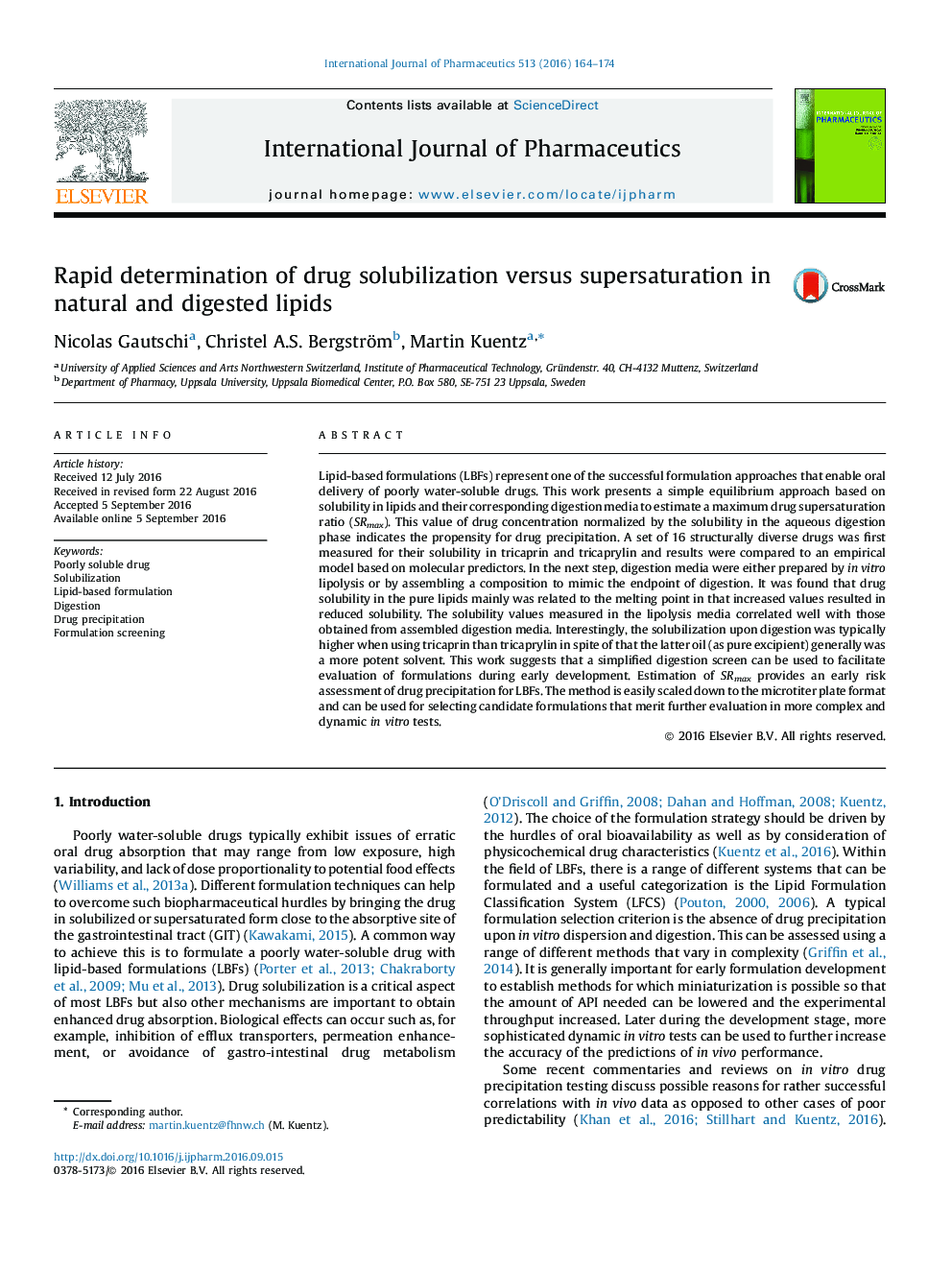| Article ID | Journal | Published Year | Pages | File Type |
|---|---|---|---|---|
| 2500751 | International Journal of Pharmaceutics | 2016 | 11 Pages |
Lipid-based formulations (LBFs) represent one of the successful formulation approaches that enable oral delivery of poorly water-soluble drugs. This work presents a simple equilibrium approach based on solubility in lipids and their corresponding digestion media to estimate a maximum drug supersaturation ratio (SRmax). This value of drug concentration normalized by the solubility in the aqueous digestion phase indicates the propensity for drug precipitation. A set of 16 structurally diverse drugs was first measured for their solubility in tricaprin and tricaprylin and results were compared to an empirical model based on molecular predictors. In the next step, digestion media were either prepared by in vitro lipolysis or by assembling a composition to mimic the endpoint of digestion. It was found that drug solubility in the pure lipids mainly was related to the melting point in that increased values resulted in reduced solubility. The solubility values measured in the lipolysis media correlated well with those obtained from assembled digestion media. Interestingly, the solubilization upon digestion was typically higher when using tricaprin than tricaprylin in spite of that the latter oil (as pure excipient) generally was a more potent solvent. This work suggests that a simplified digestion screen can be used to facilitate evaluation of formulations during early development. Estimation of SRmax provides an early risk assessment of drug precipitation for LBFs. The method is easily scaled down to the microtiter plate format and can be used for selecting candidate formulations that merit further evaluation in more complex and dynamic in vitro tests.
Graphical abstractFigure optionsDownload full-size imageDownload high-quality image (165 K)Download as PowerPoint slide
